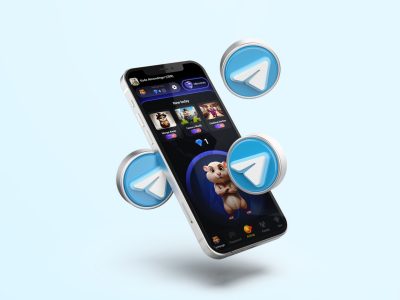
Modern smartphones are becoming more powerful, surpassing PCs in many ways. While content creation is still dominated by laptops, smartphones excel at content consumption, browsing, downloading, installing, and facilitating financial transactions. This is a crucial insight for marketers and brands looking to optimize their mobile app strategies.
One of the biggest mistakes in mobile app marketing is underestimating the profitability of app advertising. Since you’re reading this, it’s safe to assume you’re aware of its importance. Now, let’s explore other common pitfalls to ensure you steer clear of them.
Mistake #1: Overcomplicating the User Journey
App marketing presents unique challenges, mainly due to the extra steps involved compared to standard digital marketing. Encouraging users to download, install, and engage with an app is far more difficult than simply driving traffic to a website or getting users to watch a video.
Common conversion models in app marketing include:
- CPI (Cost-per-Install): A conversion occurs when a user downloads and installs the app.
- APK (Android Application Package): Similar to CPI but specific to Android apps.
- CPE (Cost-per-Event): Requires users to complete an action within the app, such as subscribing or making a purchase.
- Free Trial: Encourages users to test an app for a limited period before committing to a paid version.
Many marketers make the mistake of adding unnecessary steps, complicating an already intricate process. Keep the journey as simple as possible—fewer steps mean higher conversion rates.
Mistake #2: Vague and Ineffective Promotions
To craft compelling promotional materials, you must fully understand how the app functions, its benefits, and the problems it solves. With intense competition in the mobile app industry, merely praising your app won’t cut it.
Example:
- Weak Description: “Download our amazing app now! It’s super efficient and will revolutionize your browsing experience.”
- Strong Description: “Protect your online privacy with our VPN app. Browse securely, access geo-restricted content, and safeguard your personal data. Try it now for a safer internet experience.”
Providing precise, benefit-driven descriptions will set your app apart from competitors.
Mistake #3: Ignoring the Right Traffic Sources
Social media platforms offer valuable organic traffic and CPI models, including Facebook, Reddit, TikTok, and Pinterest. However, merely launching your app and expecting it to gain traction on its own is a mistake.
User feedback is invaluable—negative reviews often highlight critical areas for improvement. For instance, a gaming app might receive complaints about overly complex controls. Instead of dismissing such feedback, use it as an opportunity to refine the user experience.
Mistake #4: Neglecting Post-Launch App Marketing
Launching your app is just the beginning. Regular updates and targeted campaigns keep users engaged. For example, a shopping app can run special promotions during holidays to re-engage users. Keeping your audience informed and excited ensures long-term success.
Mistake #5: Overlooking ASO (App Store Optimization)
Your app’s success heavily depends on its visibility in app stores. Optimization techniques, including strategic keyword usage, can boost rankings and attract organic traffic. Factors such as download volume, user ratings, and conversion rates all play a role in search rankings. A well-optimized app listing reduces advertising costs while increasing visibility.
Mistake #6: Poor User Retention Strategies
Retention is often overlooked, but it’s crucial. Studies indicate that 77% of users abandon an app within three days, and 90% within a month.
To counter this, continually deliver value through personalized offers, regular updates, and user rewards. Understanding your audience’s needs and maintaining engagement is key to preventing churn.
Mistake #7: Ignoring Localization and Compliance
An app must resonate with its target audience, which means more than just translating its language. Cultural relevance and legal compliance are critical. For example, an educational app popular in India might require industry-specific adjustments for the U.S. market. Understanding regional regulations ensures smooth market penetration.
Mistake #8: Poor Monetization Balance
Monetization should not compromise user experience. Overloading an app with intrusive ads leads to high uninstall rates.
For instance, an app that bombards users with pop-ups every minute is likely to lose users quickly. Instead, consider subtle banner ads or an ad-free premium version to strike a balance between revenue and usability.
Mistake #9: Failing to Keep the App Updated
Regular updates prevent stagnation. A once-popular app can quickly lose relevance if it’s plagued with bugs or lacks new features.
For example, a finance app that integrates with the latest wearable tech or introduces new payment methods keeps users engaged. Keeping your app fresh and functional ensures long-term user retention.
Final Thoughts
Avoiding these common mistakes is straightforward, but fixing their consequences can be challenging. Learn from others’ errors and optimize your app marketing strategy from the start. Stay proactive, listen to user feedback, and continuously refine your approach for long-term success. Happy app advertising!





